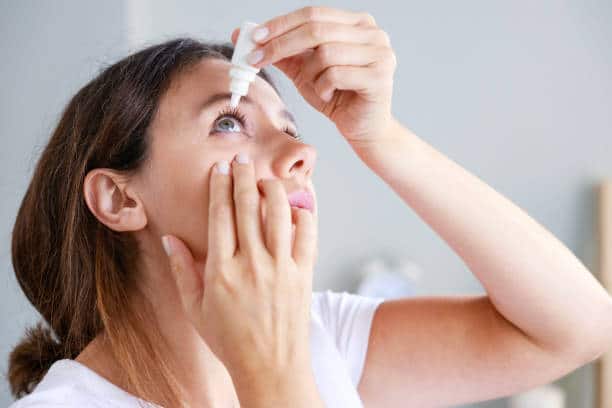Atropine Sulfate eye drops are a medication prescribed to dilate the pupils of the eye for diagnostic and therapeutic purposes. The medication contains Atropine Sulfate. It is a chemical compound that blocks the effect of the neurotransmitter acetylcholine. A chemical messenger responsible for controlling the contraction of the iris muscle in the eye. These drops allow a doctor to examine the retina and optic nerve by dilating the pupils. The process becomes easier to treat certain eye conditions.
The drops help to examine the inside of the eye, especially during certain surgical procedures. This dilation enables the doctor to see the retina and the optic nerve. It can help to diagnose potential problems such as retinal tears, macular degeneration, or glaucoma. Additionally, the eye care product is considered useful for determining the prescription required. It allows an eye doctor to recommend the right eyeglasses or contact lenses.
Furthermore, it helps to treat specific eye conditions, such as amblyopia. This is also known as “lazy eye.” In this case, this can apply to the healthier eye, thus blurring its vision and forcing the “lazy eye” to work harder. This therapy can help restore vision and improve the patient’s visual acuity.
These are a vital medication for both diagnostic and therapeutic purposes in ophthalmology. Nonetheless, potential side effects, such as blurry vision, light sensitivity, and difficulty focusing, can occur after its application. It’s essential to follow the doctor’s instructions when using this medication. The unexpected side effects should be immediately reported to the medical professional.
What Are Atropine Eye Droplets Used For?
Atropine eye droplets are a medication used to treat various eye conditions. The primary use is to dilate the pupil of the eye. This can help to diagnose some eye conditions or disorders.
It may be used to treat amblyopia or “lazy eye” which is a condition where vision does not develop completely in one eye. The use of atropine in this case can help improve the vision in the lazy eye by forcing the brain to use it more. This treatment is typically reserved for young children.
Atropine also has a role in managing pain associated with certain eye conditions. It has the potential to alleviate discomfort in the eye by promoting relaxation of the ciliary muscle. This muscle, when inflamed or irritated, can be a source of significant pain.
How Do Atropine Drops for Eyes Work?
Atropine Sulfate for the eyes works by blocking the action of a chemical called acetylcholine. Acetylcholine is a neurotransmitter that transmits messages between nerve cells. Acetylcholine plays a role in regulating pupil size, tear production, and the ability to focus on objects near the eye.
By blocking the action of acetylcholine, atropine causes the pupil to become dilated, which can help to diagnose certain eye conditions. Additionally, it may aid in alleviating pain linked to conditions like uveitis, characterized by inflammation and discomfort in the ciliary muscle of the eye.
What Are The Atropine Eye Drops side effects?
These eye drops can cause a variety of side effects, some common and others less common. The most common side effect is dilated pupils, which can cause blurry vision and sensitivity to light.
Other common side effects include eye irritation, redness, and dryness. It can cause a decrease in tear production, which can cause the eye to become dry.
Less common side effects of Atropine Eye Drops include headache, dizziness, and nausea. These side effects are typically mild and go away on their own.
Rarely, the eye care product can cause an allergic reaction. Signs of an allergic reaction include itching, swelling, and difficulty breathing. If you experience any of these symptoms after using it, seek medical attention immediately.
How To Use Atropine Eye Droplets?
First, wash your hands well with soap and water. Tilt your head back, and pull down your lower eyelid to make a little pocket. Then, hold the dropper over your eye and put in the number of drops your doctor told you to use.
Close your eye for two to three minutes, and press your finger gently against the inner corner of your eye to prevent the medication from draining through your tear duct. Repeat these steps for your other eye if necessary.
Be sure not to touch the tip of the dropper or let it touch your eye or any other surface. Doing so can contaminate the medication and increase the risk of infection.
Can Atropine Eye Drop for Eyes Be Used For Glaucoma?
Atropine Eye Drops for Glaucoma are not typically used to treat the disease. Glaucoma is a condition where the intraocular pressure (pressure inside the eye) becomes elevated and can lead to permanent damage to the optic nerve.
While atropine can dilate the pupil, it does not effectively decrease intraocular pressure. There exist alternative medications designed specifically for the treatment of glaucoma, which demonstrate greater efficacy in lowering intraocular pressure and safeguarding the optic nerve from damage.
How Long Does It Take For Eye Drops To Work?
It typically begins to work within 60 minutes of administration. The effects of atropine can last for several hours, up to a full day in some cases.
It’s crucial to acknowledge that the duration of atropine’s effects can fluctuate based on multiple factors, such as the dosage administered, the individual’s reaction to the medication, and the specific purpose for which it is being used.
What Is The Atropine Eye Drops dosage?
The dosage of atropine eye drops can vary depending on the reason for its use. For diagnostic purposes or managing pain associated with inflammation in the eye, a single dose of one or two drops may be all that is needed.
For the treatment of amblyopia, a common starting dose is one drop of 1% atropine in the affected eye daily. This dose may be adjusted based on the individual’s response and the extent of the visual impairment.
Like any medication, it’s essential to adhere to the prescribed dosing instructions provided by your healthcare provider to guarantee safety and optimal effectiveness.
How Often Can You Use Atropine Eye Droplets?
The frequency of atropine eye drop use can vary depending on the reason for its use. For diagnostic purposes or managing pain associated with inflammation, one or two doses of atropine may be all that is required.
For the treatment of amblyopia, these eye drops are typically used daily. The frequency of use may be adjusted depending on the individual’s response and the extent of the visual impairment.
As with any medication, it is important to follow the dosing instructions provided by your healthcare provider.
What Is The Difference Between Eye Drops Atropine 1% And 0.5%?
The difference between eye drops Atropine 1% and 0.5% is the concentration of the medication. The 1% eye care product contains a higher concentration of the active ingredient than 0.5%.
The choice of concentration used will depend on the reason for the medication. In general, lower concentrations are used for diagnostic purposes or managing pain associated with inflammation, while higher concentrations may be used for managing certain eye conditions, such as amblyopia.
Your healthcare provider will determine the appropriate concentration of these eye drops for your particular situation.
How To Store Eye Drops Atropine?
The eye drops should be stored at room temperature, between 15-30°C (59-86°F), and away from direct light. Be sure to keep the medication out of reach of children and pets.
After opening the bottle, you should discard it after 28 days to reduce the risk of contamination and infection.
What Should I Do If I Miss A Dose Of Eye Drops Atropine?
If you miss a dose of atropine eye droplets, apply it as soon as you remember. However, if it is almost time for your next dose, skip the missed dose and continue with your regular dosing schedule.
Do not apply a double dose of atropine to make up for a missed one. Applying too much medication can increase your risk of side effects and may be harmful.
If you have questions about a missed dose, speak with your healthcare provider for guidance.
Conclusion
These eye drops are an effective treatment for a range of eye conditions, including muscle spasms, inflammation, and excessive tearing. Due to their ability to dilate the pupils, they can also help diagnose certain eye conditions.
The drops work by blocking the action of acetylcholine, a neurotransmitter that promotes nervous system activity, in the muscles of the eye. This helps to relax the muscles and reduce spasms or inflammation.
Although Atropine Sulfate Eye Drops are generally safe, they can cause side effects such as blurred vision, dry mouth, and sensitivity to light. These symptoms usually resolve within a few hours or days, but if they persist, patients should seek medical advice.
Overall, eye drops are a valuable treatment option for various eye conditions. Patients should always follow their doctor’s instructions and report any side effects or concerns.



